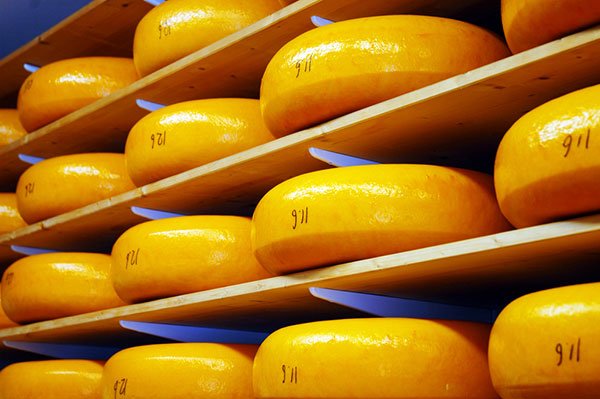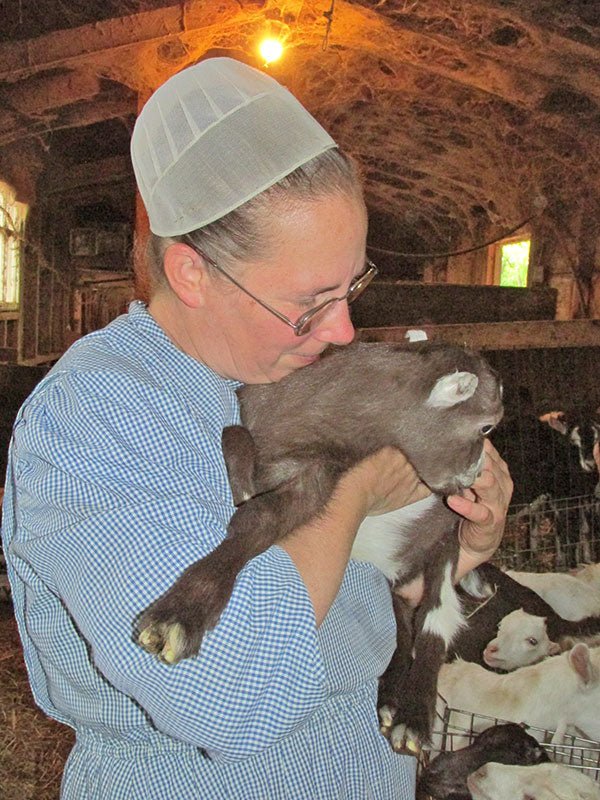
Stock photo of Edam in Belgium
We have been thinking a lot lately about climate change. It has become clear that our food choices make a difference. Apparently, in fact, the food we eat contributes about one-quarter of the total greenhouse gases generated each year.
Over half of that amount (14.5%) is caused by raising livestock.
Therefore, many have concluded that veganism is the answer.
But, is it?! Most of us (home cheese makers) make cheese and love cheese. We want to continue, even though we also want to help with the climate change crisis. The question is – can we do that or do we have to eat only “cheese” with parentheses around it?
The crux of the matter is, of course, milk. It is the one ingredient common to all dairy products – from cows, goats, sheep and water buffalo. In general, it takes 10 pounds of milk to produce 1 pound of hard cheese.
There are some who advocate for eating the soft cheeses because they use less milk and the young cheeses because they use less energy to age. There is even the theory that lower fat cheeses are better than fattier ones because, when the fat is removed, it gets used for butter which has a lower carbon footprint than cheese. What?!
The Big Picture:
All over the world, especially in South America, Africa and Asia, meat and milk provide nourishment when there aren’t good alternatives available. In many countries, livestock do much more than provide food – they help to plow fields, transport water and fertilize crops.
We know that small farmers in underdeveloped countries are not the main problem, and yet, the governments of many of these countries are working to solve it. It’s humbling to know that some countries in Africa are working hard to lessen their carbon footprint.
Even in our country, there are many small farmers who rely on milk and meat from their livestock to survive. Many of them are practicing sustainable farming methods and doing what they can to solve the climate change crisis.
Here are a few problems and thankfully, solutions. If you have more to add, please share your thoughts in the comments.
Problems and Solutions:
(Note- we’ll use cows for this, but it applies to sheep and goats, etc. as well.)
Problem: Cows eat grains. It takes a lot of land, energy and water to grow these grains and it takes a lot of grains to raise a cow. Vegans argue that it is much more efficient for humans to eat the grains directly than to eat them after they have been consumed by livestock.
Solution: Fortunately, there is a solution to this – 100% pasture grazed cows.
Some dairy farmers are using innovative grazing techniques to feed the cows and to sequester carbon at the same time.
When cows graze, they fertilize the soil by putting carbon back into it. This fertilization results in the soil retaining more water which prevents erosion and makes the land healthier.
Cow manure is also used to fertilize vegetable gardens.
Doesn’t this take a lot of land?
It does, but this is land that is often unsuitable for growing crops. It is also land that is not being developed. Can you picture the Vermont landscape with housing developments where there are now fields of cows?
It is also land that has grass on it and grass sequesters carbon. It is true that if you took that land and planted pollinator gardens on all of it, it would sequester a lot more carbon, but consider this- in a capitalist country, it is much more likely that the land would be developed. How many farms have already been broken up into lots sold off for houses?
Problem: Cows produce methane (and sheep produce even more). The bacteria in their stomachs causes them to burp and well, you know … This might seem insignificant, but, actually, methane traps 28% more heat than carbon, so it is 28 times worse for the environment.
Solution: Scientists are working on a kind of probiotic that will solve this problem (patent pending).
Breeding can also be done to reduce methane. In New Zealand they have bred sheep who release 10% less methane into the air. They also grow more wool. This is a permanent solution.
Changes to the diet can also be made – In India, they have made adjustments which have decreased methane by 12% – 15%.
In Kenya, they are testing grasses. The results of their studies will be available soon. They expect this to reduce methane by 30%.
Latin American ranchers are experimenting with silvopastoralism, planting trees in the pastures to sequester more carbon.
Suggestions:
Given all that is being done, what can we, as cheese makers do? There are many ways we can support the movement to stop climate change.
- Whenever possible, we can use milk from pasture raised livestock.
- Whenever possible, we can use organic milk or milk that we know comes from sustainable farming methods.
- Whenever possible, we can buy milk and dairy products locally (uses less gas for transport).
What do you think?














































































































































